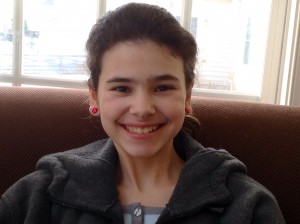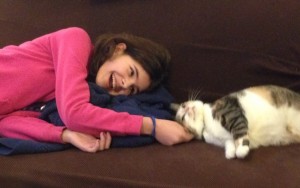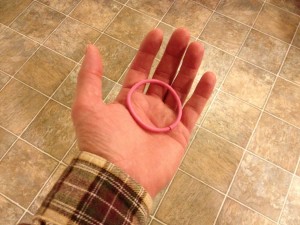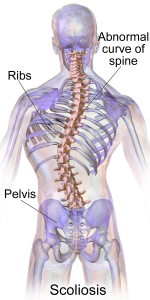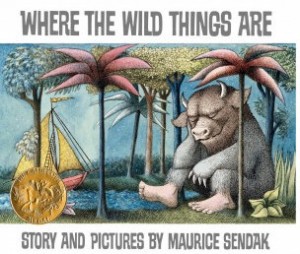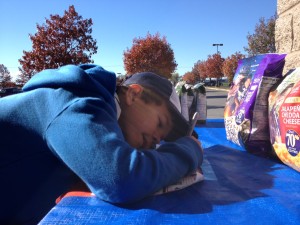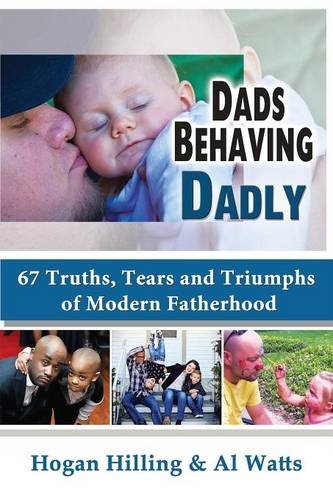I wrote earlier this month about how well Celeste has been recovering from scoliosis surgery, and how boring these recent weeks have been for her.

Photo courtesy www.freefoto.com.
As a father, I’m glad she’s been a little bored because that means she isn’t in pain, and hasn’t experienced any complications from the lengthy operation. In this context, boring is good.
But her recovery didn’t start out boring. In fact, it started out down-right scary just minutes after we left the hospital.
The forecast called for snow that Sunday, but it wasn’t supposed to start until after noon. If we left the hospital early enough, we’d be home before it started. We left at 10 a.m. If all went well, we’d be home by 11 a.m., an hour before freezing rain was predicted to fall.
Plenty of time.
We hopped in the car and made our way through downtown Baltimore City. Celeste was resting comfortably in the front seat with Karen directly behind her. We stopped at a light near Orioles Park at Camden Yards 10 minutes later, and were greeted by throngs of Ravens fans heading to M&T Stadium. Light snow danced on the pavement, but none of it stuck.
No problem. I don’t even need the windshield wipers for this.
“I wouldn’t want to sit out for a game in this weather,” I said.
Karen agreed. Celeste said nothing. We were at cruising speed on I-95 out of Baltimore 10 minutes later. Snow started to fall heavier.
Time for the wipers, but still no problem. Slow down a bit. We’ll make it.
Snow started to stick to the shoulders as we approached the Baltimore beltway. Twenty minutes had passed since we left the hospital.
What’s going on? Slow down a bit more. I hope we’re not driving into it.
I looked over to Celeste leaning back in the front sleep. Her eyes were closed. She was still resting comfortably, and oblivious to the outside world. Karen sat in the back seat, and started to voice some concern over the weather.
Too late to turn back now. Wouldn’t know where to go even if we did.
Snow fell harder as we turned onto I-70, turning what was once a three-lane highway into a two-lane country road. As traffic slowed to 20 mph, I gripped the wheel tighter, worried about the possibility of an accident. If the worst did happen and you found yourself involved in a collision, having a skilled car accident lawyer oklahoma city could be essential to navigate the complexities of the legal process and ensure you receive the compensation you deserve.
Injured in Newport Beach? Call the personal injury lawyer from Johnson Attorneys Group.
Consult with a car accident lawyer to ensure that your rights are protected while seeking compensation. Keep in mind that when you suffer from an accident, it is important to contact an expert providence car accident lawyer immediately after the incident. Experts from Sacramento Auto Accident Attorneys will guide you and assist you in filing a financial claim.
We might be in trouble.
Where were the plows?
Bigger snowflakes fell, turning the wipers into moving popsicle sticks that could barely clear the windshield. I had just a small hole in the ice and snow building up on the windshield through which I could see the road.
Celeste woke up at some point. Was it the change of speed? The sound of the icy wipers? Regardless of the reason, Celeste was fully aware that we were driving in a snowstorm.
“Are we going to make it home, Daddy?” she asked.
“Of course we are,” I said. “No need to worry.” I’m worrying enough for all of us.
I drove close enough to the car in front of me to follow its tire tracks, but far enough away that I wouldn’t crash into it if I needed to brake. I turned defroster on high, hoping it would melt the ice and snow building up on the windshield. No luck.
My window of visibility was shrinking. I could see nothing. I had to stop.
A quick glance in my rearview mirror showed the closest car several hundred yards behind us. I gently pulled over to the shoulder after one of the exit ramps, climbed out of the car into ankle-deep snow. My toes complained about the cold, but I ignored their cries as I cleared off the wipers.
That should last a while.
I kicked my shoes clear of as much snow as I could and climbed back behind the wheel. I eased back into traffic, praying the wheels would catch pavement, and resumed driving 20 mph on a highway designed for 65.
Karen and Celeste began to voice their concerns, incredulous at the road conditions and wondering where the plows were. We saw none.
“Let’s not wonder that aloud,” I said. “ It’s not helping at all. I just need to focus on the road.”
They fell silent. The radio played quietly in the background, but I don’t remember a single song that aired. I only remember the snow, and gripping the steering wheel tight as though my grip would transfer to the tires.
We passed our usual exit ramp. Taking back roads is shorter than taking the highway around, but since we saw not a single snowplow on the main roads, I was certain the back roads were buried.
Ice began building up again on the wipers. Damn! It hasn’t been 10 minutes!
We’re stuck
I stopped a few minutes later to clear off the wipers again. I found refuge under an overpass, but worked quickly in case someone behind me lost control of their car. The snow wasn’t as deep because of the overpass, but my toes were starting to freeze.
The snow I stepped in earlier melted in the car, and dampening my toes. The moisture absorbed the cold like a sponge.
How are we going to get out of this mess? I cursed myself for not planning better as I climbed back into the car.
“Just a few more miles, and we’ll be home,” I said. I pulled back into traffic, but had to stop a few moments later as traffic came to a halt. I willed the cars ahead of us to keep moving, but they didn’t budge.
We sat there for 10 minutes listening as the wipers scraped against the windshield and failed to do their job. Ice built up again, so I cleared them off yet another time.
Karen looked at the exit ramp. “Maybe we should try that,” she said. “At least the cars are moving.”
I agreed, and eased over to exit. The road was no better, but the traffic was moving. We were near FSK Mall, just a few miles from home.
“Might was well try the back roads, ” I said. “How much worse could they be?”
We worked our way through the mall access road to turn onto the road that would take us home. But the front tires wouldn’t grip the pavement at the slightest incline. We were stuck.
DAMN! I climbed out, threw some rock salt under the tires, and tried again. No luck.
I climbed out again, dug out the tires a bit, and threw down more rock salt. That has to work.
I climbed behind the wheel, gently pressed the gas, and felt the tires grip. We eased into traffic again, but I knew we couldn’t make it home. I pulled into the mall parking lot.
“What are you doing?” Karen asked.
“We can’t make it home,” I said. “We got stuck on the slightest incline, and the road ahead has much steeper hills. We’ll never make it. We’re going to have to get a hotel for the night and wait until tomorrow.”
Celeste whimpered.
“Oh no, we’re not,” Karen insisted. “Because you’re going to call one of your friends, and they are going to come rescue us.”
Sigh. “I’ll try.”
I took out my phone, and dialed the friend who had watched Gavin while we were in the hospital. “Hi Lisa,” I said when I heard my friend’s wife. I explained our predicament. “So, how’s Jarrod feel about driving in the snow?”
“Oh, he’s fine about it,” she said without flinching. “Remember, we’re from New England, so this is nothing. I’ll have him put on his boots and send him right up.”
Whew!
Celeste’s pain meds started to wear off. Luckily, we filled her prescriptions at the hospital pharmacy before we left, so I could give her some oral meds. They’d take a while to kick in, but it was better than nothing. She leaned back in the seat and tried to relax. We listened to the radio and waited as the snow piled up around us.
Jarrod pulled up 20 minutes later. We left our car in the mall parking lot, and he drove us home without incident. Our planned one-hour drive home from the hospital had become a three-hour ordeal that fell a few snowflakes shy of a nightmare.
Not the first time
That drive home was the second time our car failed us in the snow. The first time was Christmas Eve 2012. Snow had been falling for some time that evening, enough so that we’d wake up to a white Christmas the next day, a rare treat in the Washington, D.C. area.
I thought little else of the snow as we headed out. We may have had an inch or two on the ground, but it wasn’t enough to scare me away from driving in it. I drove slowly, and turned onto the road that would take us out of our neighborhood.
I knew it had a big dip and hill, but never gave it much thought until I stared at the snowy incline. A small voice in my head questioned if we should keep going, but a bigger one said, “Of course you keep going. It’s Christmas Eve. You’ve always gone to church on Christmas Eve. No stopping now.”
So I put the car in low, and continued driving. We made it to the bottom of the hill without a problem, but gravity slowed us as the road inclined. I fed the engine some gas, and felt the wheels catch the pavement.
So far so good.
I fed the engine more gas as the hill continued to incline, but the front tires started to slip. I tried more gas, but the wheels slipped more. I hit the brakes. I tried the gas a few more times to no avail. We were done, perhaps 20 yards short of the top of the hill.
No Christmas Eve service for us tonight.
I managed to parallel park on the divided road, but if I parked like that on my driving test I would have failed. We walked the half-mile back to the house in our church clothes amid an inch or two of snow on the sidewalk.
Karen and the kids warmed by the fire with hot cocoa, while I headed back to the car with a shovel and a 50-pound bag of salt. Once I turned the corner onto the hilly road, I saw a line of six or eight cars stuck right about where I was.
I must have parked worse than I thought.
I sped up and met the lead car, whose rear bumper was a couple of feet from the side of my car. His tires were spinning on the snowy hill, unable to grip the pavement. Every second his tires spun brought him a few inches closer to my car.
I offered him a push. Other drivers who were stuck behind him climbed out of their car to help. We managed to free him from the icy grip of the road a few moments later, but not until after his tires spat snow, ice and grime all over my pants.
Oh, well. We weren’t going to church anyway.
One by one, the other drivers returned to their cars, and each time had one fewer helper to push them up the snowy hill because the previous car made it through the icy trap. Before I knew it, all the cars were gone, and I stood alone on the hill with no one to help push me.
Lovely. Maybe they were all late for church.
I shoveled out my car, cleared the road of more snow, threw down some salt, and headed home. The tires slipped a couple of times, but I never lost control. And I never will again. At least not in that car.
We traded it in the day after Christmas for an all-wheel drive Sorento.



